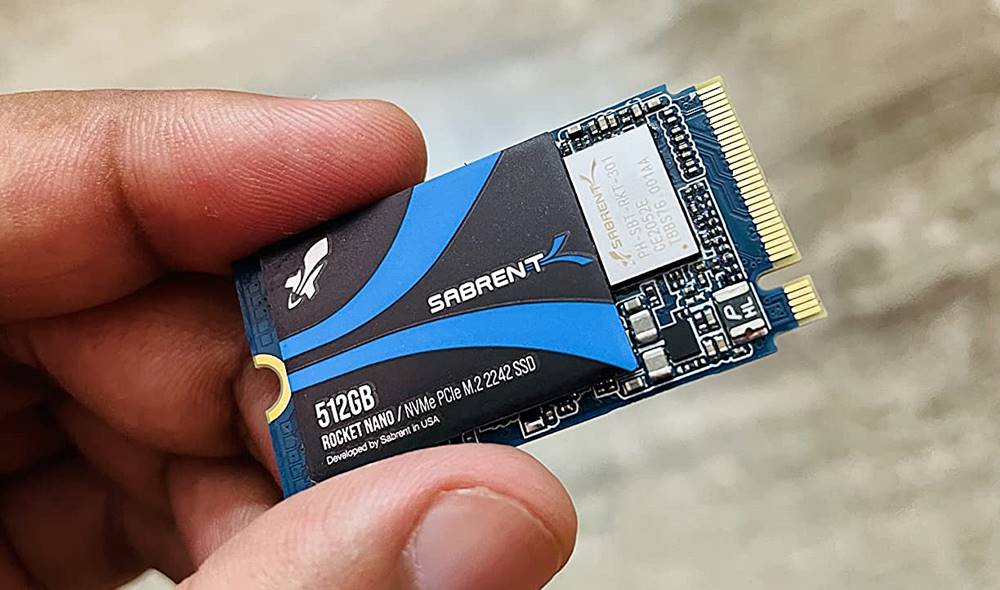SSD overprovisioning refers to additional allocation NAND flash memory beyond the advertised ability to improve performance and endurance. This reserved space is not accessible to the user, but is used by the SSD controller to wear levelinggarbage collection and poor block management. By spreading write and erase cycles over more cells, over-provisioning reduces the wear and tear of any one cell, extending the SSD lifespan and maintaining its speed over time.
An example:
Imagine your SSD is like a bookshelf. Without over-provisioning, every shelf is available for you to put your books (or, in the case of the SSD, your data). At first glance, this might seem like the best use of space. However, if you fill all the shelves completely, rearranging the books to add new ones or organize them better becomes a cumbersome task. You may have to remove some books to make room for others, which takes time and effort.
With Over Provisioning, it's as if you've intentionally left some shelves empty. While you may have less space overall for your books, you can now easily add, remove, and rearrange books because you have free shelves to work with. For your SSD, the drive controller uses this “empty shelf space” to more efficiently manage data storage and wear leveling, extending the life of your drive and maintaining its performance over the long term. weather.

What is SSD overprovisioning?
Understanding SSD Overprovisioning and NAND Flash Memory
SSD overprovisioning is a strategy that reserves some NAND flash memory, not visible to the user, for management tasks such as wear leveling and bad block management.. NAND flash cells, the core of SSD storage, withstand wear and tear with each one write/erase cyclewhich eventually leads to cellular degradation.
Over-provisioning helps distribute these cycles more evenly across the flash memory, extending the life of the SSD and maintaining performance by ensuring there are always spares. cells to replace any that wear out or fail. This approach significantly improves the endurance and efficiency of an SSD, making it a critical feature for maintaining optimal performance and reliability over time.
Practical benefits for you
Overprovisioning reduces have on into individual cells, which significantly extends the operational life of the SSD. Additionally, over-provisioning improves performance, especially in write-intensive tasks, by ensuring that the SSD controller has ample space for efficient data management operations such as wear leveling, garbage collection, and bad block management, thereby maintaining speed and responsiveness of the unit over time.
Determine the correct amount of overprovisioning
Achieving the right amount of overprovisioning involves balancing the need for SSD performance and endurance with available storage capacity. Factors include the drive's intended use case (for example, write-intensive applications may benefit from greater over-provisioning), the underlying NAND technology (some types are more prone to endurance than others), and specific performance requirements of the user.
Manufacturers typically set a default overprovisioning level, but some SSDs allow users to adjust it, allowing customization to individual needs and preferences.
Implementing SSD overprovisioning
Implementation of SSD overprovisioning can be managed by the manufacturer or tuned by the user, depending on the SSD model.
Manufacturers preset a certain level of overprovisioning to balance performance and durability. For enthusiasts or business users who require specific performance features, some SSDs offer tools to modify overprovisioned space.
This tuning process involves using software provided by the SSD manufacturer to reallocate storage capacity as over-provisioned space, thereby improving the performance and endurance of the SSD according to user needs and workload requirements.
The good news
All modern SSDs include some level of over-provisioning by default, as it is crucial to maintaining drive performance and longevity.
Lack of over-provisioning would lead to faster NAND cell wear, reduced performance over time, especially under heavy write loads, and potentially shorter overall SSD life. This makes over-provisioning a standard feature on all SSDs on the market.
Real-world implications of overprovisioning
Over-provisioning helps maintain consistent write speeds over time. When an SSD has more free space to work with, it can manage data more efficiently, reducing the time it takes to write new information.
SSDs need to move data internally to free blocks for new writes, a process known as garbage collection. Over-provisioning ensures that there is always enough free space for this process to occur without impacting performance.
Having additional space allows for more efficient error correcting code (ECC) processes, which improves data integrity and reliability.
In data centers and enterprise storage solutions, over-provisioning is critical to maintaining high performance and reliability under heavy workloads. It ensures that storage systems can handle large volumes of transactions without degrading over time.
Over-provisioning effectively reduces the usable storage capacity of an SSD for the end user, which can be seen as reducing the drive's profitability per gigabyte.
Overprovisioning is one of the reasons you get less storage space than advertised
You may have seen drives with 480GB instead of 500GB or 960GB instead of 1TB. Here is the contribution of that saved space to overprovisioning.
For consumer SSDs, overprovisioning can range from 7% to 10% of total NAND flash capacity..
However, it is important to note that the overall space difference (e.g. 20GB vs. 500GB in your example) is not solely attributable to over-provisioning. A significant part of this discrepancy is due to the difference between decimal (how manufacturers advertise capacity) and binary (how operating systems calculate capacity) measurements, as well as file system overhead.
In summary
For you as a computer user, over-provisioning means you'll get a device that will still be faster and last longer, even if you sacrifice a small portion of its total storage capacity. It's a trade-off that benefits you by giving you more reliable and consistent performance over the life of your SSD. You'll enjoy the speed and responsiveness of your SSD both in the future and the day you installed it, without having to worry about the complexities of how it's achieved. This technical feature, which operates largely behind the scenes, significantly improves your computing experience without requiring any effort or management on your part.
Resources:













Leave feedback about this